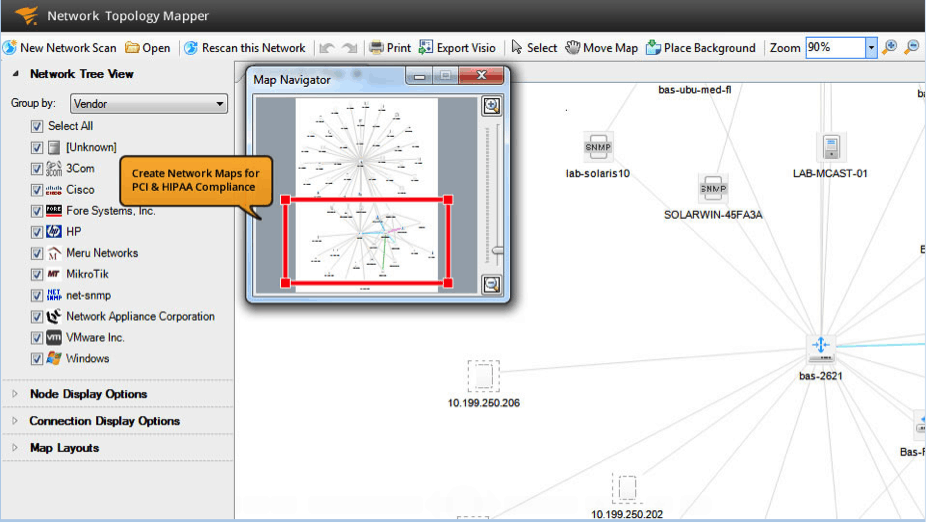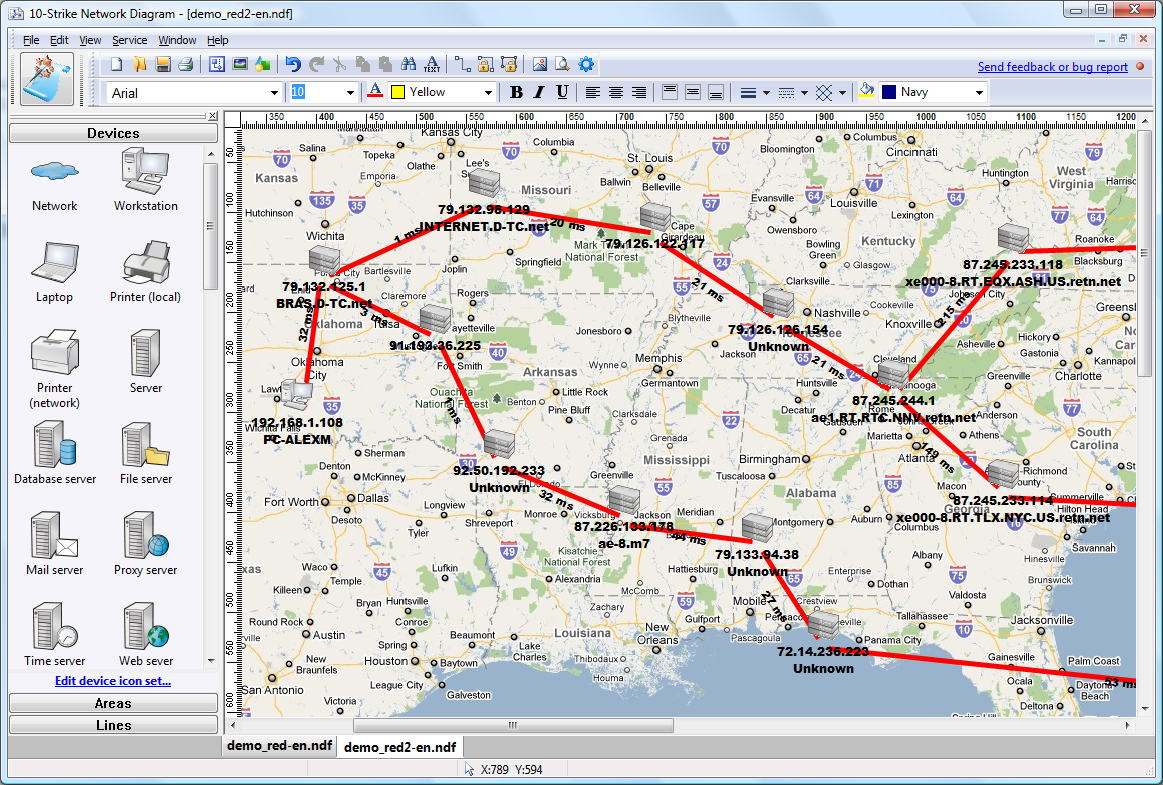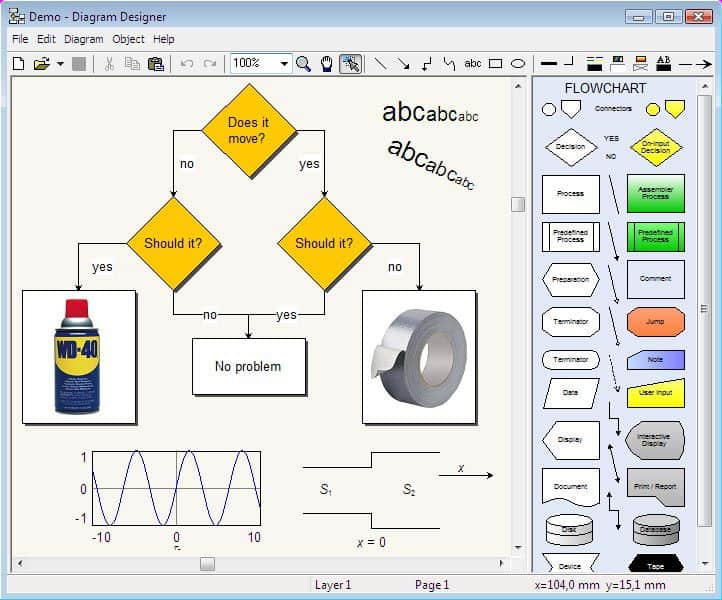Lan Topology Mapper
Download jNetMap for free. Graphical network monitoring and documentation tool. JNetMap is a graphical network monitoring and documentation tool. It will ping all registered devices every x minutes, updating the status according to the result of the ping.
Home > Articles
␡- LAN Topology Types

This chapter is from the book
This chapter is from the book
Chapter 3: LAN Technologies
Terms you'll need to understand:
- Active Monitor
- autonegotiation
- broadcast domain
- collision domain
- network diameter
- network sniffer
- network topology
- bus topology
- ring topology
- star topology
Techniques you'll need to master:
- Know and identify different LAN topologies
- Understand different LAN devices in a network
- Understand Ethernet technology
- Identify a star topology, and know its speeds and capabilities
- Understand Token Ring and the ring topology
- Understand the capabilities of ATM and its advantages
- Understand the advantages of segmenting
The focus of this book is to prepare for an exam that covers supporting and troubleshooting Cisco networks. In order to prepare for this exam, you need to understand some of the principles and media types used in today's networks in order to begin troubleshooting. You should have a good knowledge of different topologies and how certain media standards operate. The IEEE media standards you should know for the exam are the Ethernet, Fast Ethernet, Gigabit Ethernet, ATM, Token Ring, and wireless standards.
For the exam, Cisco expects you to know many aspects of the network. You should understand how hubs, bridges, switches, and routers segment the networks, as well as how they divide broadcast and collision domains. In this chapter, I give you an overview of the different LAN topologies and the IEEE LAN media standards you need to know in order to do well on the CCNP exam.
LAN Topology Types
In the next three sections I will explain the three different network topologies you need to know for the exam. A network topology is all the combined physical, logical, or virtual components that make up the network or network segment. Although there are many topologies, we will focus on those necessary for the exam, which include the bus, ring, and star topologies.
Bus
A bus topology is a local area network (LAN) where each of the networked devices are attached to a single cable or link, as shown in Figure 3.1. In a bus topology, stations are attached to a linear multiport medium where only half-duplex operations exist between a station and a bus.
NOTE
Half-duplex is where communication occurs bi-directionally on one cable. This means that a device sending data cannot receive data at the same time. Full-duplex uses two individual cables, one to send and another to receive. This allows a device to send at the same time it receives data.
Frames that are transmitted to the bus provide the address of the frame's destination. If the frame gets to the end of the link and the frame has not found its intended destination, then the frame is lost. In a bus topology, there is no security; every node attached to the line can see the conversations of the other nodes on the link.
Figure 3.1 A bus topology LAN. Notice that all the workstations are connected by a single cable.Ring
In a ring topology LAN (shown in Figure 3.2), as in a bus topology LAN, all the nodes or devices in the network are attached to the network on the same cable or link. The difference is that a ring topology makes a complete circle. Both Token Ring/IEEE and Fiber Distributed Data Interface (FDDI) use a ring topology. FDDI is an American National Standard Institute (ANSI) X3T9.5 standard cable, which now supports up to Gigabit speeds using fiber-optic cabling. It can use a single ring for half-duplex operations or a dual–ring architecture for full-duplex operations.
Figure 3.2 A ring topology LAN. Notice that all of the nodes connect to the ring. Data for most implementations travels in one direction on the ring. However, many technologies, including Token Ring, allow for a second ring which allows for full-duplex operations.
When a break in the ring occurs, such as a cut cable or other cabling problem, it affects all the stations. This means that none of the stations connected can receive or transmit data. The longer the cable or link and the more attached stations, the more repeaters that are needed. However, due to timing distortions within signals, a limited number of repeaters can be used in the same network. In a ring-topology network, centralized access means that faults are easy to detect and isolate. Multiple rings are sometimes used to make a very robust and reliable network.
Star
The star topology is the most common topology in today's networks, and includes Ethernet, Fast Ethernet, and Gigabit Ethernet. Each node in a star topology connects to a dedicated link where the other end connects to a switch or hub. In the star-topology network shown in Figure 3.3, multiple devices are connected to a switch or hub.
Figure 3.3 A Star topology LAN. Notice that each workstation is directly connected to a hub or switch.One of the best reasons to use a star topology is that a loss of any node will not disrupt network operations. It is also easy to add or remove a node from the network. From wiring to installation, it is particularly easy to set up a star topology network.
Related Resources
- Online Video $119.99
- Online Video $119.99
- Book $42.50
What is Network Mapping?
Network mapping is a process used to discover new devices, interfaces and visualize physical and virtual network connectivity. Network mapping helps in breaking down the network thereby simplifying network maintenance and management. This is done with the help of a network mapping software or tool. Network scanners detect the network with all its components and delivers the list of devices. This can be used to create a network map or a network topology. Network mapping tools integrate the process of scanning and mapping and maps a network automatically. OpManager, the automated network mapping software lets you configure and generate network maps effortlessly.
Automate network map; visualize and pinpoint network outages and performance degradation with OpManager
When the number of monitored devices increases and when companies expand to multiple locations, it becomes impractical to maintain a static network map. Further, referring to a fixed network diagram in the event of a network failure or performance degradation is highly complex and an unwholesome experience.
Quickly create a network map layout by choosing the appropriate credentials.
Customize & export network maps to business views or even to Microsoft Visio.
Physical location network view of how the devices are arranged on the Datacenter racks; helps you locate the device swiftly.
Infrastructure displayed over real-world Google maps with automatic device status propagation.
OpManager infrastructure maps: Automatic L2/ L3 network maps (Network views), Custom network maps (Business views), 3D floor views (Datacenter floor) and Rack views.
3D Datacenter Floor: OpManager allows you to create an exact replica of your datacenter in 3D with all the racks.

A sample tree network layout of an enterprise network.
Automatic network mapper
The IT network is forever dynamic; the static network maps often fail to capture the new changes in the network. When a network fault occurs, it becomes impossible to track the affected device or business service using the static network diagrams. With OpManager’s automatic network mapping tool, administrators can:
- Visualize their complete IT infrastructure.
- Be assured of referring to the most up-to-date network maps, with periodic network scanning.
- With the network topology mapper tool, construct an easy-to-view network topology map that lets one choose the network’s seed device and preferred network layout type.
- Share network diagrams across peer groups in no time by exporting to Microsoft Visio.
Pinpoint network outages and performance degradation at–a–glance
OpManager's network mapper reflects the latest device and link status with color coded icons in the network maps, acting like a live Visio diagram that lets administrators:
- Spot any network problems at-a-glimpse.
- Quickly drill down to the problematic device or to the link from the network maps.
- Understand relationship between the parent and the dependent devices.
- See the intensity of the network issue identified by faithfully reproducing the network layout.
- Prioritize network faults and start remediation actions.
Keep an eye on critical business services and custom device groups
It makes sense to group the devices that need special attention under one consolidated view even when they are spread across subnets. That’s exactly what OpManager’s custom maps or Business views section offers.
Learn more about custom network maps and network topology mapping with OpManager, the automatic network diagram software.
Lan Topology Diagram
Network Topology Mapper
- Proactively identify devices or business services that need immediate attention and start resolving the bottlenecks if any.
- Organize an enterprise network geographically.
- Find out not just the problematic device but also where it is located, visually.
- Create and share application or location specific network diagrams.